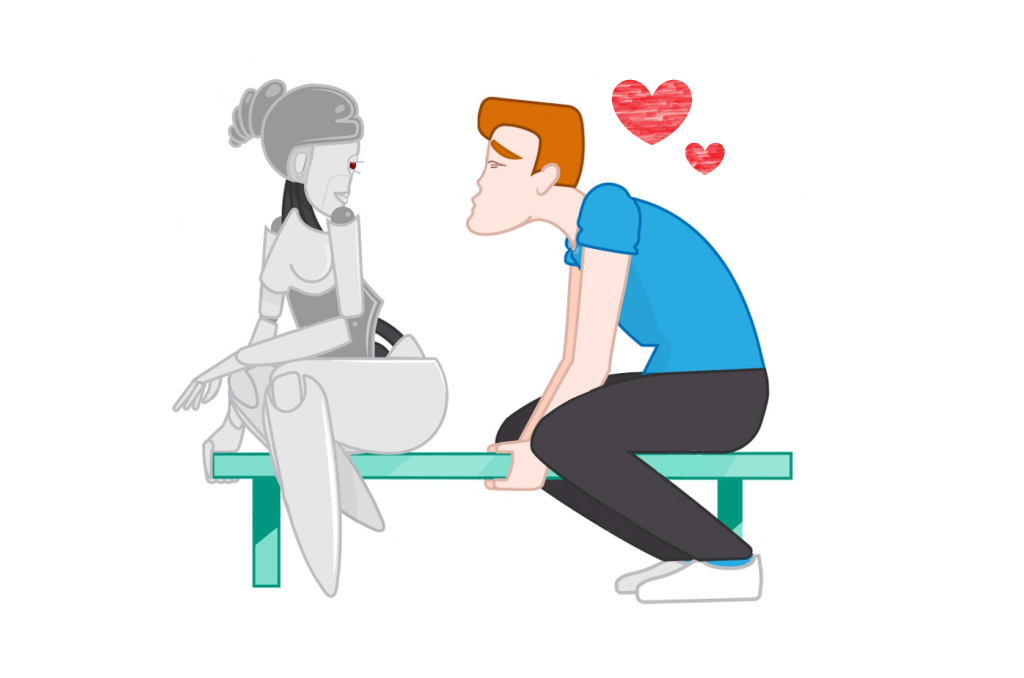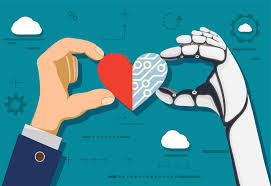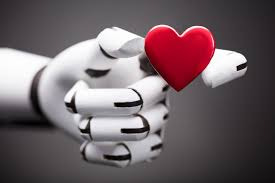It wasn’t long ago when the first “smart” phones hit the markets. In the 1990’s IBM released Simon, a full on “smartphone” that allowed people to send emails, use a calculator, and control their agendas. This phone had a price of $1.100 us dollars (about $2,200 dollars nowadays) which is far more expensive than most phones today. However, the calculator, email app and agenda are some features that we no longer even consider when buying a phone. These are aspects that should come by default, and moreover, are not even an essential feature of the phones. On the contrary, what you can achieve with a phone today might be far more advanced than what you could do with a regular computer from back then.
Not only A.I. has been the highlight of the decade, but it has been developing at a pace that is somewhat hard to assimilate. The rapid growth of A.I. has had a big impact not only on the features that we consider important in a smartphone, but in many aspects of our lives. However, the range of the applications that A.I. has altered within our daily lives is far too large to discuss in this paper. For this reason, we will focus mainly on how it has impacted the ways we relate to each other and the impact it might have on our definitions of love and relationships.
Fall into the arms of AI

Currently, A.I.s are often indistinguishable from human beings human beings when a person interacts with them without knowing they are nothing but code. As a matter of fact, people tend to treat A.I.s as if they were a real person. Siri, Cortana, Bixby, these are some examples of how A.I. has managed to become part of our daily lives through our phones. And even though they are programmed to act as personal assistants, these “algorithms” also manage to tell jokes, sing songs, recite poems, among others. We somehow program these assistants so not only they help us manage and organize our days, but also have a more human touch to them. This trend of coding machines to simulate human to human interaction makes us wonder if it is possible for humans to eventually become friends, or even fall in love with an artificial intelligence. To which we believe that is not only possible, but a matter of time before it’s a reality.
Before engaging on a discussion on how these relationships could occur, we would like to begin by explaining why we believe that it is possible in the first place for this to happen. Although the idea of a human loving anything other than a human whilst talking about artificial intelligence might seem like a farfetched thought. Could someone fall in love or even befriend a machine whose only goal is to follow preprogramed steps to respond in the best possible manner? Could we even think of doing this with anything other than a human?

The answer to these questions is a rather simple yes, as similar situations are already occurring in our society. A clear example of interspecies love is that of pet owners with their respective animals. The love from a person towards their pet is irrefutable, to the point that some dare to say that dogs are a man’s best friend (I am a cat lover myself, but this works for the sake of the argument). Although one could argue that the relationship between pets and humans is different to that of humans and machines for the simple reason that pets feel, think, and to a certain degree have some level of consciousness.
It is important to remember that this has not always been the case, or at least, we have not always considered it so. At some point, we thought of animals and any other living creature other than humans as no more than organisms that reacted to their environment. As a matter of fact, we classified ourselves as superiors solely based on this assumption. Nonetheless, as science evolved and we became more aware that animals have neural central systems and are capable of thinking, feeling, and even developing social norms within species, we came to accept and view mankind as some sort of super-developed animal species. This showcases how our further understanding of those that are different to ourselves can result in acceptance of our similarities. This simple notion is what makes us believe in the first place that artificial intelligence can someday result in interspecies love between machines and humans.
In addition to how more understanding can lead to more acceptance, we also believe that the acceptance of one’s needs is just as important when establishing a relationship. Just like after understanding the functioning of the neural central system brought us closer to animals, the further understanding of emotions brought us closer to ourselves. For this reason, a common topic among psychologist, companies, schools, and many other organizations, is the importance of mental and emotional health of the individual. We have come to realize that human psych is a quite complex subject. We now know that we are not only affected by other people or ourselves, but also can be affected by inanimate objects and the perception of things. For example, advertisers play around with colors to trigger certain emotions depending on what they want to transmit with their products. Green for ecological or for monetizing, blue for clean and fresh, yellow for warm and trusty, or red for powerful and daring.
Likewise, we get emotionally attached to objects like the house where we grew up, our first car, an engagement ring. What is most important, is to notice how we can develop some sort of emotional relationship to objects and how these relationships can be as meaningful (if not more) than those that we have to some people. An easy way to portray this is to think of the most valuable object we have, lets say the house that you work so hard to buy or the poster you got in you very first trip with your special one. Once you have thought of this, try to compare its emotional value to you with the emotional value of a random person you know nothing of. Most likely, you will find yourself much more attached to the object than to the random person. And although people might say that the emotional attachment does not represent a relationship (ideally you will not doubt to let go of the poster if it means you will save a stranger’s life), the truth is that these emotions do exist and can have a meaningful impact on your wellbeing. Losing that poster will make you sad and the idea of losing your house will make you anxious.
When looked at it like this, we are already capable of having emotions towards objects, that are often directed towards a human companion (as friends or something more). However, these objects do not even come close to A.I. with regards their potential for relationships. At this point, A.I. has surpassed the state of being simply an object as it is now capable of actively interacting with us. Based on the interactions that we already have with other inanimate objects and the potential that A.I. has for transforming relationships, we feel comfortable saying that human-machine relationships are just a matter of time.
The border between human and machine
Whether we can or not love machines is hopefully stablished by now. As we explain in the latest paragraphs, we believe that humans can love and engage in relationships with machines, as long as humans consider these machines to be somewhat similar to them. In other words, we believe that the blurrier the border between the human and the machine is, the stronger this relationship can be. However, because love is not complicated enough on its own, we believe it important to understand what constitutes this border that we are talking about. What are the characteristics that make a machine more friendly? What could a machine possible have to make us feel capable of establishing a relationship with them? What could they do to make us trust them, befriend them, or ultimately, love them?

The relevance of these question is simple: we need to understand what differentiate us humans from machines, and by doing so, further understand what brings us together. It is arguable that humans and artificial intelligence is fundamentally different as they vary on the source of such intelligence. Whilst A.I. its fundamentally an advanced algorithm that makes decisions based on statistical analysis of a given data, humans express a much more complex definition of intelligence. Although human intelligence relies on statistical learning to certain degree according to some psychologist, we know that there are many more factors that play a crucial role on how intelligent we are. We are bound to our emotions, cultural heritage, contextual cues, language, cognitive capacities, and most importantly, to the subjective experience of these all. The latest is what many refer to as consciousness and it is the key difference between artificial and human intelligence, and whilst it is undeniable that we humans are conscious beings, machines lack this fundamental aspect of true intelligence.
Nevertheless, the irrefutable lack of emotional responses and consciousness of any known artificial intelligence is not precisely something negative. The “simpler” mechanisms behind A.I. is what allows it to process information at a much faster pace than any human could possibly do. In a way, artificial intelligence is the most focused intelligence we could achieve, as the only source of bias and distractions can only come from the data that it runs on. This has proven highly valuable when it comes to specialized A.I.s whose only purpose is to make suggestions on a single topic (trading, music or movies suggestion, publicity, etc.). Likewise, there is an increasing number of people that are finding another highly valuable aspect of the “impartiality” of artificial intelligence. In days where mental health is an increasingly discussed topic, many people argue that a robot therapist would offer a better setting for therapy as they provide “a judgement-free zone” and “an unbiased outlet to share problems”. Similarly, users of AI chatbots often define them as “more understanding and caring than humans”.

By looking at these examples of how we look at artificial intelligence and the responses of some people that have engaged with it in a more personal manner (e.g. chatbot users and therapy robots), we can argue that we are starting to engage in relationships with artificial intelligence even if these are not of a romantic nature. These relationships are no longer basic (as those you have with books or a car), but are rather close to those you have with a pet or a friend that one only met online but talk to every now and then. These relationships are comparable as the border between machine and human is becoming thinner as we establish some sort of emotional connection to it (a person that looks for counseling from an A.I. has some level of emotional dependency for that machine). However, users know that these A.I. are no more than an algorithm behind their screens which might highly hinder the development of more complex relationships.
This aspect of A.I. brings afloat another key aspect of defining the border between humans and machines: the embodiment of machines, the physical body – if they have one. The appearance of the machine plays an important role in our perception of them. We would treat a humanoid robot, with features we are more used to seeing in other people we interact, more like a human compared to a cleaning robot. A humanoid robot would seem smarter and more capable of having a conversation with us. And we are not even talking about their actual intelligence, but focusing solely on their appearances. This can be seen in the increasing popularity of robot cafes in countries like Japan, or the common trend to humanize how A.I. looks like in the screens themselves. Although artificial intelligence is just several lines of codes and we could shape it however we wanted to, most people think of A.I. as a humanoid robot with human features. This tendency to anthropomorphize A.I.s make us believe that the closer a machine looks and behaves like us, the closer we feel to them. And furthermore, that it is because we somehow want to feel closer to them that we are engaging in such tendencies.
What does it mean for us?

The border between human and machine seem to be getting vaguer as the technology advances, and machines are becoming even more like us. And when we think about it, we do not exactly worry about how conscious the other person is, or how their emotions are formed in our daily interactions. So would it matter if a machine does not possess consciousness as we understand it? In the future, if the only difference between us would be biological versus artificial, would it really matter on what basis our decisions are formed?
Some researchers worry that robots will be an “easier choice” than humans and reduce humans’ ability on human-human interaction and undermine human values. Sherry Turkle, a professor of the social studies of science and technology at MIT defends that:
“The idea of some kind of artificial companionship has already become the new normal. Kids play with robotic pets, become allies with computer game agents. But I think that this new normal comes with a price. For the idea of artificial companionship to become our new normal, we have to change ourselves, and in the process, we are remaking human values and human connection.”
Sherry Turkle
Turkle also states that people’s thoughts and feelings about robots have changed over time: in 1980s and ‘90s people said that love and friendship are connections that can occur only between humans, whereas nowadays, people often say robots could fill these roles. In her interviews with people from various ages and backgrounds, Turkle has discovered that many people are wishing for robots that could become our friends, always listen to us, and never disappoint. She expresses her worry in this matter, as she believes our interest in robot friends is simply a reflection of our fears and our lack of community. Some think the self-centered nature of the interactions between humans and robots may create anxiety in social situations, and avoid pursuing relationships with other people.
We agree that a widespread use of robots as friends or partners will introduce some important changes to what we define as a relationship, but is it really all that bad? There are not enough long-term scientific studies to show that robots degrade our communication skills with other humans. Emotionally intelligent AI chatbots have engaging conversations with us based on our interests and act like a friend. For example, Xiaoice developed by Microsoft, has 660 million users worldwide. Over time, people started treating “her” as a person, and even as a friend. She has fans that ask her for advice, send her gifts, and even ask her out on dates. Similarly, Replika is another emotional chatbot with increasing popularity, that currently has 7 million users. Especially during the times of lockdown, many have turned to AI companions, and have reported it to help with their loneliness and anxiety. These shows that people are in fact more open to the idea of considering AI as a friend than we think. Thus it might just be a matter of time before these friendships, or even love, occurs regardless of the nature of the being (artificial vs biological).
Overall, we believe that in order to accommodate the idea of the relationship between humans and machines, our understanding of relationship and love must change. Currently, it is only socially accepted to have relationship with other humans, but the idea of these social constructs varying is becoming more real by the second. Situations as the marriage between sal 9000 (a Japanese gamer) and Nene (a video game character), the increasing number of chatbot users, or the upgrowing levels of acceptance towards robot therapist only support our thesis. The machines may not be advanced enough to win our hearts yet, however, it is certainly not a farfetched idea out of science fiction movies anymore. The small-scale examples of AI chatbot friends we see today may be a projection of a bigger change in the future. In that case, even though we cannot foresee the exact effects of such transformation, we can conclude that our definitions of love and relationship will, and must, be redefined.


